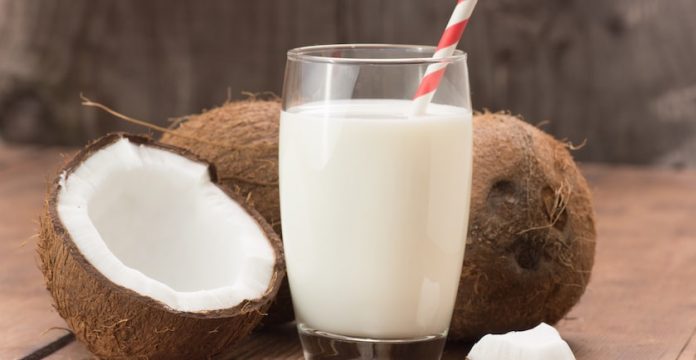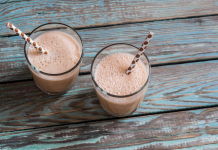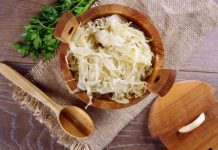
Milk is losing its image.
The smiling celebrity, glass uplifted, upper lip coated with a white milk moustache, has long represented easy consumption of calcium, protein, and the other nutrients we need to be healthy. Recent decades, however, have seen this perception change as the potential hormone and antibiotic content of American milk has raised concerns and the environmental impact of milk production becomes more widely known.
Americans are drinking less milk every year, consuming an average of 37 percent less cow’s milk today than they did in 1970. At the same time, consumption of nondairy milk alternatives continues to grow. Almond milk, by far the most popular dairy alternative, has seen a 250 percent sales increase in the past five years alone. This trend may seem exciting, but it also raises an important question: Is switching to nondairy milk really as healthy as we think?
Read more about baking with milk alternatives
Milk Alternatives Don’t Measure Up
Right now, when someone chooses to become dairy-free, she has to make a sacrifice – whether that’s in taste, consistency, or even essential nutrients. Current milk alternatives are thinner than traditional milk, and many have a chalky “off” taste in their original form, which many manufacturers mask by adding sugars to create a tastier, sweeter beverage. The result is a drink that can often be too sweet, and this high sugar content diminishes the healthfulness of what should ostensibly be “healthy” alternatives.
Calcium is one of the most important nutrients that milk provides. While some alternatives do contain as much calcium as cow’s milk – or more – coconut milk (which has been growing in popularity and can be found in coffee shops and grocery stores) contains only a third of the calcium of cow’s milk.
But above all other nutrients, protein is where milk provides real value. A cup of cow’s milk contains 8 grams of protein, which is vital for the healthy function of our bodies. Almond, coconut, cashew and rice milks, on the other hand, contain a gram of protein per cup or less, creating a huge nutritional gap in the diets of nondairy drinkers.
This lack can seem puzzling when derived from protein-rich nuts, but the process of creating milk from these sources leaves a lot to be desired. A single serving of almonds contains nearly 6 grams of protein, but 8 ounces of almond milk contains only a gram. The fact is that there aren’t very many almonds in almond milk. As little as 2 percent of some brands’ almond milk products are comprised of almonds; the rest of a carton is mostly water and sugar.
Making Up the Deficit
When a person cuts dairy out of her diet, her protein intake can suffer considerably. This loss should be made up if she wants to continue to be healthy. Meat, arguably the most obvious source, is not the healthiest or most environmentally friendly choice. So what’s the alternative?
Beans are a great way to supplement your diet with plant-based protein and fiber, with about 15 grams of protein in a single serving. Beans are excellent low-fat sources of iron, magnesium, potassium, and many other nutrients. They can be easily added to soups or salads, they make a great side dish, and they’re wonderful in casseroles as well.
In addition to making up lacking protein, beans provide a source of fiber, while milk does not. Increasing your fiber intake has been shown to significantly lower the risk of developing heart and cardiovascular diseases. Whole grains such as quinoa, farro, and oats are also excellent sources of fiber, and they contain more protein than you’d expect from members of the grain family.
Read more about the 7 best vegan protein sources
Milk-Free Nutrition Is Possible
Living without dairy products doesn’t have to mean living without vital nutrients. While many dairy alternatives may leave you thirsty for something else, there are many ways to ensure you consume the important nutrients necessary for a balanced diet.
Try eating something new today. Your body will thank you for it.
Written by Adam Lowry. Adam Lowry is the co-founder of Ripple Foods, a company that exists to make dairy-free foods as they should be: high in protein, low in sugar, loaded with nutrition, and delicious. Adam believes that business is our greatest vehicle for positive social and environmental change. Connect with Ripple Foods on Twitter.










